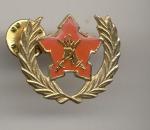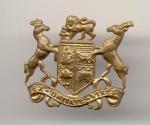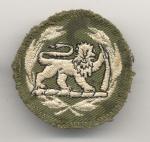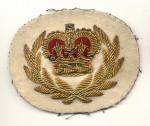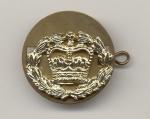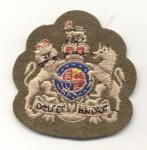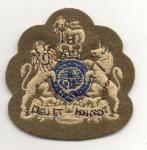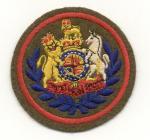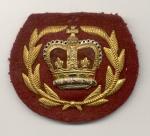-
Posts
2,123 -
Joined
-
Last visited
-
Days Won
4
Content Type
Profiles
Forums
Blogs
Gallery
Events
Store
Everything posted by Paul L Murphy
-
This does not sound credible, I suspect somebody has got their stories mixed up or else they are just making it up out of nothing. The likelihood of an artillery NCO's tunic ending up in Japan is very small and the "last insult" type of behaviour is not consistent with how the Japanese in general behaved after being ordered to surrender by the Emperor.
-
Highly unlikely. For a start, where would the uniform have come from ? The only German officers in Japan were the military attaches and a small number of U-Boat officers at resupply bases. Without pictures to support this I would say it is one of those anecdotal stories that do the rounds but are untrue.
-
I am only aware of the Sacred Treasure in a pasteboard box. The Golden Kite continued to be issued in the lacquer case but I am not sure about the Rising Sun. One source claims that they were issued in a paper wrapper but there is no proof of this either way.
-
ANS = American Numismatic Society. They sold all their non US items two years ago at Morton & Eden. There are a number of die differences between the original and the post war piece. It will be one of the things I discuss once I finally get around to writing my book on Japanese medals since at the moment the information is not published. Also this piece differs from the comments made in Peterson so there is still some research needed to get to the bottom of the issue about the direction of the inscription on the bar (Peterson claims it is left to right only). Regarding a case of issue, I do not know anybody who has ever seen an original. If one existed it would most likely have been a pasteboard box since this is what Japan had moved to for its awards by this time (even late war awards of the Sacred Treasure are in a pasteboard box).
-
This is the medal which was in the ANS collection and I was the purchaser. I have posted photos of the reverse in one of the earlier posts in the Japan forum (or the collectors gallery) so take a look at it there. :cheers:
-
How well is the rosette attached to the ribbon since it is incorrect for this award ? Still a lovely item and very hard to find indeed.
-
Here are a few more badges. First up RQMS on a grey backing which I beleive is Army Educational Corps Followed by an RQMS on white backing for the Royal Corps of Transport. Followed by a curiosity. It is a metal version of the RQMS badge but is only about half the size of the normal sized badge. Does anyone have any idea on why it is so small and what it was/is used for ?
-

Irish Military Uniform?
Paul L Murphy replied to HugoB268's topic in Great Britain: Militaria: Badges, Uniforms & Equipment
There is no reference anywhere to medals being awarded by the National Volunteers or the Irish Volunteers. These are most likely the QSA and KSA. What we must remember is that at this time the "mission" of the Volunteers was to ensure that the Home Rule Bill was passed into law, not the achievement of a Republic. Hence the wearing of British medal ribbons would probably have been tolerated since the organisation was not seeking a break with the Empiure, just a redefinition of the position of Ireland within that. -
If you are interested in early French medals, rather than uniforms, then Soldats d'Antans on Quai de la Tournelle (near Notre Dame) is one place I would recommend. However they do not speak English.
-
If you can get your hands on the French magazine "Militaria" you should be able to find some dealers adverts that will help. The French ebay site (ebay.fr) is also actually quite good for this as long as you know what you are buying.
-

Irish Military Uniform?
Paul L Murphy replied to HugoB268's topic in Great Britain: Militaria: Badges, Uniforms & Equipment
This is not an OTC uniform. It is the uniform of the Dublin Regt, Irish National Volunteers. -
Very interesting. Am I correct that this was issued in 1951 ? Do you have any other military items belonging to your father to show us ? :cheers:
-
Gentlemen, if you want to trade with each other then do it via email, PM or in the sales section of the forum. This section of the forum is not for selling stuff.
-
These are all post war veteran pieces. The originals are incredibly rare. I think you have probably got all the post war versions there.
-
We are seeing some interesting items in this thread, let's keep them coming. Up next we have the 1953 pattern badge worn by a WO1 in the Foot Guards who is not an RSM. Followed by the 1953 pattern that was worn by the Paras, among others. Then we have two different versions of the badge for the Master Gunner, Royal Artillery (or a Conductor in the Royal Logictics Corps). I am hopeing someone can enlighten us as to why there are two different types. http://gmic.co.uk/uploads/monthly_09_2009/post-1487-125267958179.jpghttp://gmic.co.uk/uploads/monthly_09_2009/post-1487-125267959035.jpg
-
This one is ok. I have handled others like this where the green appears overly vivid compared to the other colours. I think it must be due to the way in which some of the dyes used have aged (or not) over time depending on the storage conditions.


